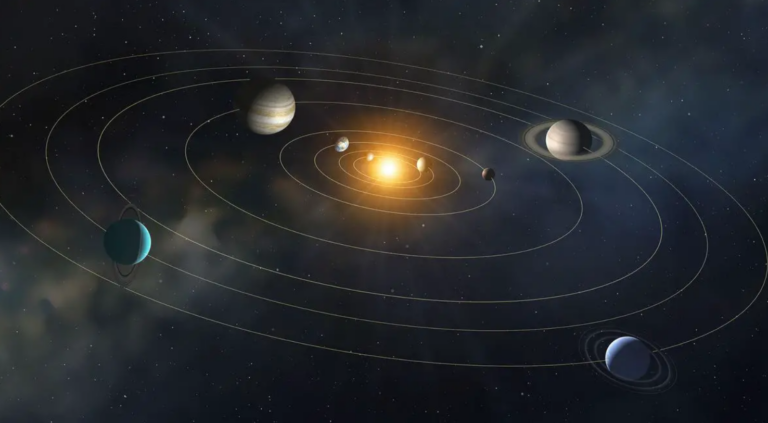Astronomers have made a groundbreaking discovery by detecting an object with a radius of 1.3 km at the outermost reaches of the Solar System.
It is a celestial body that has the following dimensions: radius = 1. Recently, astronomers realized that 3 km has been found in the outermost part of the solar system and it was noted that it was a discovery. Scientists have been speculating the existence of at least kilometre-size bodies like the one detected for more than seven decades. These objects are in between the initial formation of tiny dust and ice particles and the formation of huge planets we are familiar with today and were instrumental in the creation of planets.
Beyond Neptune, is the area commonly known as the trans-Neptunian region or more scientifically as the Edgeworth-Kuiper Belt, where there is an asteroid belt with Pluto being the most renowned member. Edgeworth-Kuiper Belt Objects are believed to be left-overs right from the early period of the Solar System formation. Organisms and objects within the desolate and scattered Edgeworth-Kuiper Belt remain relatively unaltered from the initial formation of the Solar System, yet asteroids and other celestial bodies near the Sun’s forces are arguably altered by heat, impact, and gravity from present-day planets. This is the reason why astronomers dedicate their efforts to investigating these objects in an attempt to understand how and where in space planets are formed.
While objects with size ranging from 1 to several kilometer in radius in the Edgeworth-Kuiper Belt are thought to exist, they are too faint and located at a tremendous distance that even with highly advanced scopes like the Subaru Telescope they cannot seen. In order to counter this specific problem, a research team consisting of Ko Arimatsu of the National Astronomical Observatory of Japan implemented a process known as occultation.
Supernovae are usually created when massive stars explode in a spectacular event, and by surveying a vast number of stars and searching for an object that would momentarily obscure the starlight, the team confirmed that these objects exist. Indeed, in a very special setup, two small telescopes were installed on the rooftop of the Miyako open-air school in Miyakojima-shi, Okinawa Prefecture, Japan by the OASES team. During the time of 60 hours these telescopes were able to find about two thousand stars which helped scientists to reveal secrets of the outer Solar System.
The researchers were then able to find an example of a star that appeared to fade due to an Edgeworth-Kuiper Belt object of 1. 3 km in radius. This fact means that the total amount of EKBOs which are larger than a kilometer is even bigger than it was estimated before. This is in line with the theories that posit that planetesimals undergo a slow growth process to form objects one kilometer in size before growing expedited to form planets.
“This is a great relief for smaller projects,” said Arimatsu. The team gathered less than 0. We are given only 3% of the funding for these major international projects, which means they cannot even start the construction of the second dome for the additional telescope. However, this allowed us the opportunity to make a discovery that larger attempts would likely not have been able to accomplish. Our success story is therefore an indication to launch a more elaborate study in the Edgeworth-Kuiper Belt. Moreover, we would like to try to find the new Oort Cloud that is situated beyond this zone. ”
To the best of the author’s knowledge, the findings of this study were reported in the journal Nature Astronomy (Arimatsu et al. ‘A kilometre-sized Kuiper belt object discovered by stellar occultation using amateur telescopes’. The study was possible with the support from the Japan Society for the Promotion of Science as well as with the help of Miyako open-air school children and community of Miyakojima-shi.
Do not forget to share your opinion with us to provide you with the best posts !




0 Comments